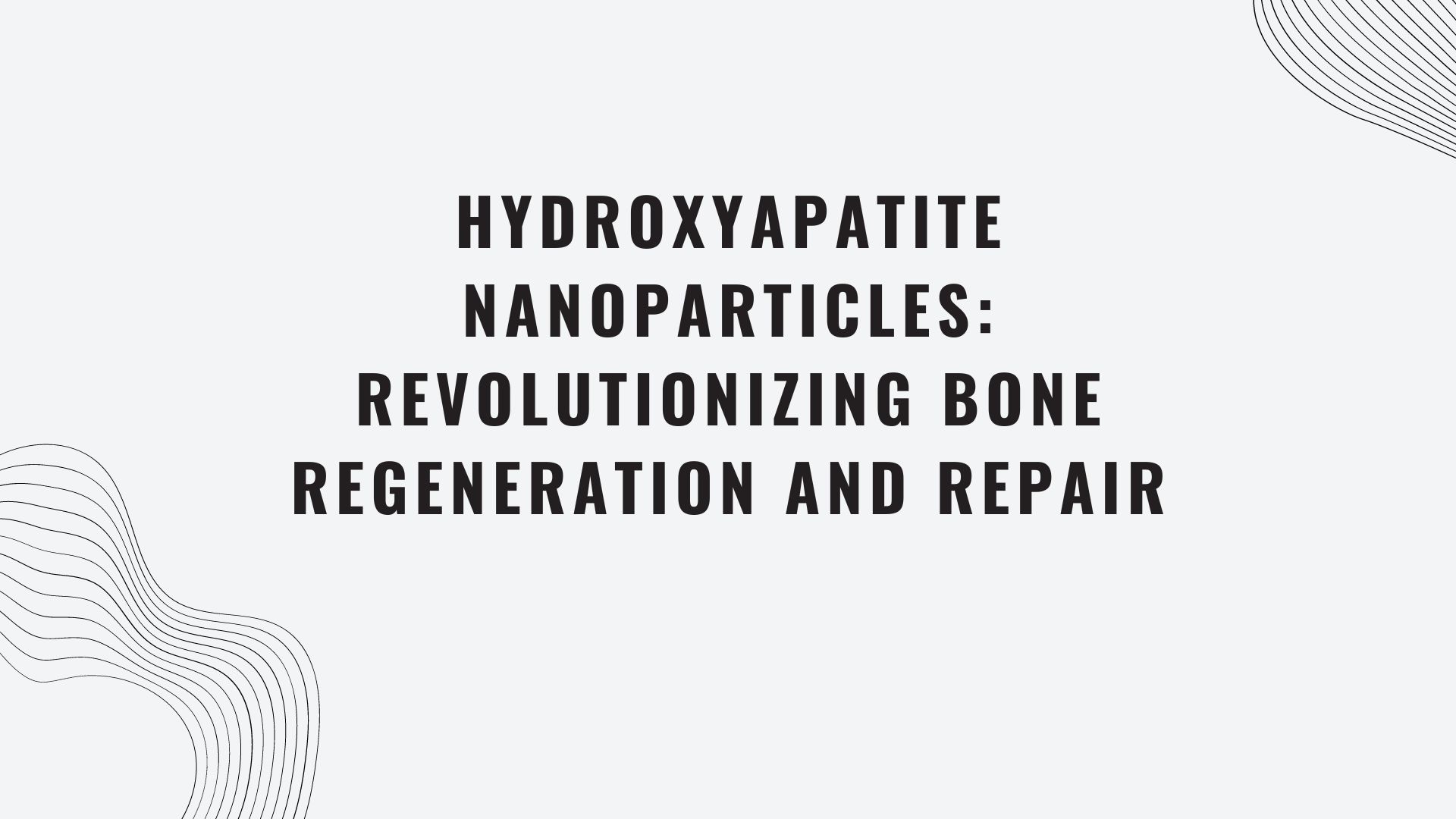Bone regeneration and repair have long been a significant challenge in the medical field. Traditional methods, such as bone grafting and metal implants, have served well but come with limitations, including the risk of rejection, infection, and the lack of complete integration with the body’s natural tissues. However, recent advancements in nanotechnology have introduced a promising material—hydroxyapatite nanoparticles (HAp NPs)—that is set to revolutionize the way we approach bone repair and regeneration.
What Are Hydroxyapatite Nanoparticles?
Hydroxyapatite is a naturally occurring mineral form of calcium apatite, which makes up about 70% of human bone. In its nanoparticle form, hydroxyapatite mimics the composition and structure of bone at a nanoscale, allowing for enhanced integration and bioactivity. These nanoparticles typically measure between 20 and 100 nanometers and can be synthesized through various methods such as sol-gel, hydrothermal, and co-precipitation processes. Their size and surface area make them ideal for applications in bone tissue engineering.
The Unique Properties of Hydroxyapatite Nanoparticles
Hydroxyapatite nanoparticles possess several unique properties that make them particularly effective for bone regeneration and repair:
-
Biocompatibility: As a primary component of bone, hydroxyapatite is inherently biocompatible, meaning it does not provoke an immune response when introduced into the body. This minimizes the risk of rejection and inflammation.
-
Osteoconductivity: Hydroxyapatite nanoparticles serve as a scaffold for new bone growth, guiding the deposition of natural bone material and promoting the adhesion of osteoblasts (bone-forming cells). This property is crucial for successful bone integration.
-
Bioactivity: Hydroxyapatite nanoparticles can release calcium and phosphate ions, which are essential for bone mineralization. This bioactivity accelerates the healing process by enhancing the natural bone formation.
-
Surface Area: The nanoscale size of hydroxyapatite particles provides a large surface area, which improves the material’s interaction with the biological environment. This increased surface area enhances cell attachment, proliferation, and differentiation, crucial for effective bone regeneration.
Applications in Bone Regeneration and Repair
Hydroxyapatite nanoparticles have shown great promise in several key areas of bone regeneration and repair:
Bone Grafts and Scaffolds
Traditional bone grafts often involve harvesting bone from another part of the patient’s body (autografts) or from a donor (allografts). These methods can lead to complications such as donor site morbidity or rejection. Hydroxyapatite nanoparticles can be used to create synthetic bone grafts that closely mimic natural bone structure. These synthetic grafts can be molded into various shapes to fill bone defects and provide a framework for new bone growth.
Drug Delivery Systems
One of the innovative applications of hydroxyapatite nanoparticles is their use as drug delivery vehicles in bone repair. Due to their porous nature and high surface area, these nanoparticles can be loaded with therapeutic agents, such as antibiotics or growth factors, which can be gradually released at the site of injury. This targeted delivery system enhances healing and reduces the risk of infection.
Dental Implants
Hydroxyapatite nanoparticles are also being utilized in the field of dentistry. Dental implants coated with hydroxyapatite nanoparticles have shown improved osseointegration, which is the process by which the implant anchors to the jawbone. This coating enhances the stability and longevity of dental implants, reducing the risk of implant failure.
Fracture Healing
Fractures, especially complex ones, often require surgical intervention and prolonged healing times. Hydroxyapatite nanoparticles can be incorporated into bone cements or coatings for metal implants used in fracture repair. These nanoparticles promote faster bone regeneration and improve the integration of implants with the surrounding bone tissue.
Future Perspectives and Challenges
While hydroxyapatite nanoparticles hold immense potential, there are still challenges that need to be addressed to fully realize their benefits in clinical settings. One of the primary challenges is the scalability and cost-effectiveness of nanoparticle production. Large-scale synthesis methods need to be developed to make hydroxyapatite nanoparticles more accessible for widespread medical use.
Another challenge is the long-term biocompatibility and stability of hydroxyapatite nanoparticles in the human body. While initial studies have shown promising results, further research is required to ensure that these nanoparticles do not degrade or cause adverse effects over extended periods.
Conclusion
Hydroxyapatite nanoparticles are poised to revolutionize the field of bone regeneration and repair. Their unique properties, including biocompatibility, osteoconductivity, and bioactivity, make them ideal candidates for various applications, from bone grafts to drug delivery systems. As research and development continue, these nanoparticles may become a standard component of bone repair treatments, offering patients faster recovery times and more effective outcomes. The future of bone regeneration is undoubtedly bright, with hydroxyapatite nanoparticles leading the charge towards innovative and improved medical solutions.

